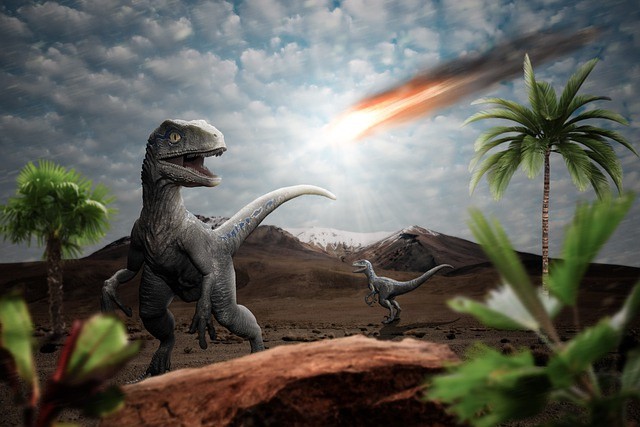
The fossils of a dinosaur that died on the day the killer asteroid struck might reveal what happened 66 million years ago. The fossil evidence has not been this compelling, and it will be a window to a complete picture of how the reptile died. If it were not for the asteroid strike, the dinos would have ruled the earth, and mammals won't have become what they are now.
Scientists Discover Fossil of Dinosaur Leg
The discovery of a complete leg belonging to a Thescelosaurus with the skin was still intact when the mass extinction event occurred. The impact surged seas and material that killed all creatures then, mentioned the BBC.
When a 7.5-mile-wide asteroid the size of Mount Everest smashed into the Gulf of Mexico, it killed out all non-avian dinosaurs globally, reported Science Alert.
The fossils were discovered in the Tanis site in South Dakota, with Thescelosaurus leg and Triceratops skin as seen in a video. More preserved specimens discovered at the site are a fish, turtle, and even a pterosaur embryo in its egg, as seen in GSA.
Scientists believe that the asteroid's cataclysmic impact churned up tiny glass-like particles of molten rock trapped in the gills of fish fossilized remains at the spot mentioned in PNAS.
Robert DePalma (study lead), a graduate student from the University of Manchester, said the details were preserved and trapped in time.
Prof Phil Manning, DePalma's Ph.D. supervisor at Manchester, told the BBC that it was a fantastic find that was unique in his career. These fossils of dinosaurs are the most intact alleged of the fatal asteroid impact.
The fossils were featured in a documentary by David Attenborough that was filmed in three years and released on April 15.
Scientists Probe Into the Fossil Discovered
Robert DePalma, a relative of film director Brian De Palma, is shown in the BBC program wearing an Indiana Jones-style fedora and a tan shirt. It was him who called the site Tanis.
All the evidence from Tanis and the documentary was considered controversial. Outlets like The New Yorker drew attention in 2019 before academic peers read them.
Unlike most paleontologists who are handed off when institutions get hold of specimens, DePalma exerted control over how the fossil was to be presented. He responded to Kate Wong, science editor of Scientific American, and he posted in a tweet that there were skeptics; who weren't fully convinced yet.
Since then, a few peer-reviewed studies have been available, and the dig team has expected more. Consultants have been hired to check out the specimens.
Prof. Paul Barrett of the Natural History Museum in London analyzed the leg and determined that it belongs to a Thescelosaurus that died instantly. He added that it came from an unknown group seen before and looked like the scaly lizards; but not feathered.
Prof Steve Brusatte, an outside expert from the University of Edinburgh who worked on the documentary, was skeptical about the discovery. He called the spherules in the gills not enough; it should be studied more.
Hypothesized that some of the animals may have died before the event happened, to be excavated and buried again by the collision. The fossils of dinosaur could be evidence of the fatal asteroid strike but still needs verification to be done.
Related Article : Cockroaches Remained Crawling on Earth When the Asteroid Killed the Dinosaurs Which Proves Ability To Survive After Human Extinction









